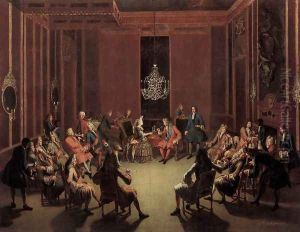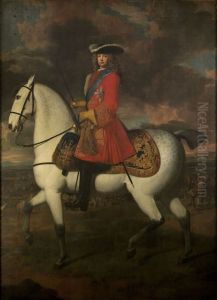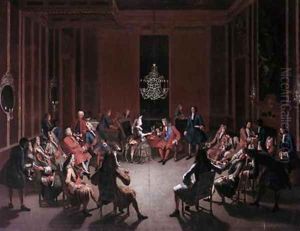Paul Carl Leygebe Paintings
Paul Carl Leygebe was a German artist, born in the year 1664 in Nuremberg, Germany. His work primarily revolved around painting and engraving. Leygebe's artistry was deeply influenced by the Baroque period, a style known for its dramatic use of color, light, and shadow, as well as its emphasis on motion and detail. Despite being less widely known than some of his contemporaries, Leygebe's contributions to the arts during his lifetime were significant, especially in the context of German Baroque art.
Leygebe's journey into the arts began in his hometown of Nuremberg, a city renowned for its rich cultural and artistic heritage. During his formative years, Leygebe was exposed to a wide array of artistic influences, which helped shape his unique style. He was particularly known for his skill in engraving, a technique that requires meticulous attention to detail and a deep understanding of both composition and shading. His engravings often depicted religious scenes, landscapes, and portraits, showcasing his versatility as an artist.
Throughout his career, Leygebe gained recognition for his ability to blend traditional Baroque elements with his own personal style. His paintings often featured dramatic contrasts between light and dark, a hallmark of the Baroque movement, which he used to convey emotion and narrative depth. Leygebe's work was not only appreciated for its aesthetic qualities but also for its ability to evoke a sense of movement and life, drawing viewers into the scenes he depicted.
Despite his talents and contributions to the art world, Paul Carl Leygebe's name is not as prominently featured in art history as some of his peers. His death in 1720 in Nuremberg marked the end of a career that, while perhaps not as celebrated as others, significantly impacted the German Baroque art scene. Today, his works can be found in various collections and museums, serving as a testament to his skill and dedication to his craft. Leygebe's legacy continues to be studied and appreciated by art historians and enthusiasts who recognize the depth and beauty of his work.


